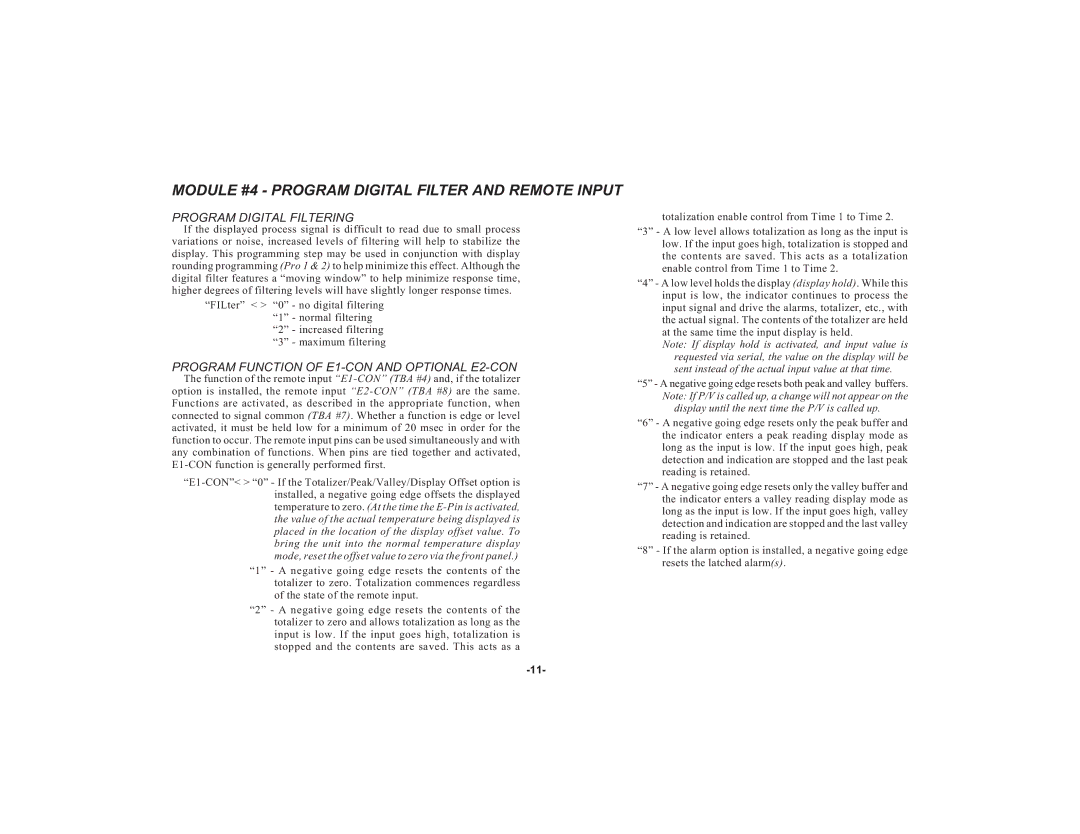MODULE #4 - PROGRAM DIGITAL FILTER AND REMOTE INPUT
PROGRAM DIGITAL FILTERING
If the displayed process signal is difficult to read due to small process variations or noise, increased levels of filtering will help to stabilize the display. This programming step may be used in conjunction with display rounding programming (Pro 1 & 2) to help minimize this effect. Although the digital filter features a “moving window” to help minimize response time, higher degrees of filtering levels will have slightly longer response times.
“FILter” < > “0” - no digital filtering “1” - normal filtering “2” - increased filtering “3” - maximum filtering
PROGRAM FUNCTION OF
E1-CON function is generally performed first.
“1” - A negative going edge resets the contents of the totalizer to zero. Totalization commences regardless of the state of the remote input.
“2” - A negative going edge resets the contents of the totalizer to zero and allows totalization as long as the input is low. If the input goes high, totalization is stopped and the contents are saved. This acts as a
totalization enable control from Time 1 to Time 2. “3” - A low level allows totalization as long as the input is
low. If the input goes high, totalization is stopped and the contents are saved. This acts as a totalization enable control from Time 1 to Time 2.
“4” - A low level holds the display (display hold). While this input is low, the indicator continues to process the input signal and drive the alarms, totalizer, etc., with the actual signal. The contents of the totalizer are held at the same time the input display is held.
Note: If display hold is activated, and input value is requested via serial, the value on the display will be sent instead of the actual input value at that time.
“5” - A negative going edge resets both peak and valley buffers. Note: If P/V is called up, a change will not appear on the
display until the next time the P/V is called up.
“6” - A negative going edge resets only the peak buffer and the indicator enters a peak reading display mode as long as the input is low. If the input goes high, peak detection and indication are stopped and the last peak reading is retained.
“7” - A negative going edge resets only the valley buffer and the indicator enters a valley reading display mode as long as the input is low. If the input goes high, valley detection and indication are stopped and the last valley reading is retained.
“8” - If the alarm option is installed, a negative going edge resets the latched alarm(s).
